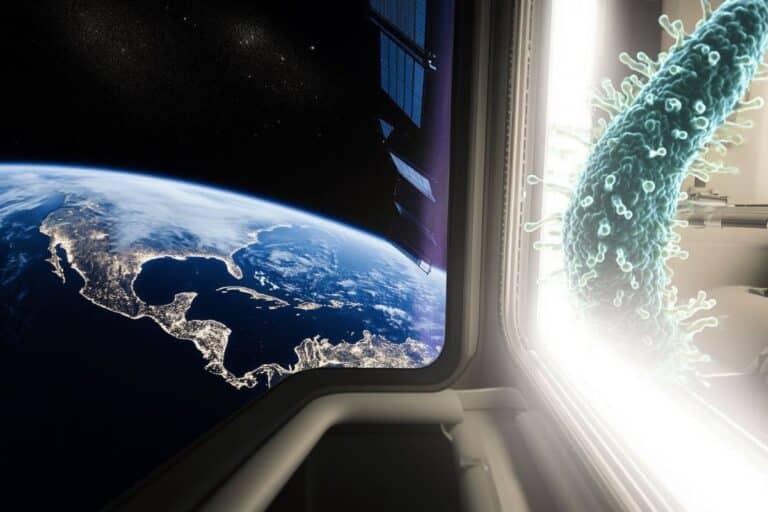
An unknown bacteria on Earth has developed in the Chinese space station: astronauts are faced with a situation straight out of a science fiction movie.
How did your country report this? Share your view in the comments.
Diverging Reports Breakdown
An unknown bacteria on Earth has developed in the Chinese space station: astronauts are faced with a situation straight out of a science fiction movie.
Niallia tiangongensis is related to Niallia circulans, a soil bacterium known for its robustness, formerly classified as a pathogenic Bacillus. It is capable of forming spores, which act as survival capsules in the face of environmental stress. What sets it apart is its unprecedented ability to break down gelatin to extract nitrogen and carbon, a precious asset for building a protective biofilm. Its similarity to bacteria capable of causing severe infections in immunocompromised people means that caution is advised. The accumulation of mutations and the growing resistance to antibiotics observed in the station could complicate the management of any contamination. It serves as a reminder that, despite all the precautions taken, man is never alone on his interstellar journeys. Invisible micro-organisms could well play a key role in the success – or failure – of future great space adventures.
A different kind of space bacteria
In May 2023, during a routine mission carried out by the Shenzhou-15 crew, samples taken from a habitation module on the Chinese space station Tiangong revealed the presence of a bacterium previously unknown on Earth. Named Niallia tiangongensis, after the station where it was born, this species intrigues scientists because of its unique characteristics and its adaptation to the space environment.
According to the study carried out as part of the China Space Station Habitation Area Microbiome Program (CHAMP), the microbiome on the Tiangong station differs markedly from that on the International Space Station (ISS). The researchers found a dominance of microbes associated with humans, but also marked functional and genetic diversity, with mutations probably linked to adaptation to the extreme conditions of space: microgravity, increased radiation, confinement and strict cleaning cycles.
Niallia tiangongensis is related to Niallia circulans, a soil bacterium known for its robustness, formerly classified as a pathogenic Bacillus. Like its cousins, it is capable of forming spores, which act as survival capsules in the face of environmental stress. What sets it apart, however, is its unprecedented ability to break down gelatin to extract nitrogen and carbon, a precious asset for building a protective biofilm and withstanding the hostile conditions of space.
On the other hand, it seems to have lost the ability to use other sources of energy, demonstrating the astonishing plasticity of living organisms when faced with a new environment. This capacity for rapid adaptation is a reminder of the extent to which space is a natural laboratory for microbial evolution.
Health and safety risks for missions
While it is not yet known whether Niallia tiangongensis poses a direct threat to the health of astronauts, its similarity to bacteria capable of causing severe infections in immunocompromised people means that caution is advised. Especially as the accumulation of mutations and the growing resistance to antibiotics observed in the station could complicate the management of any contamination.
Researchers stress the importance of understanding how these micro-organisms settle, evolve and interact with humans and equipment on board. Because the risk is not just to health: uncontrolled microbial proliferation could also damage sensitive equipment, or even compromise the smooth running of missions.
The discovery of Niallia tiangongensis is not an isolated case. Studies carried out in NASA’s clean rooms, in preparation for the Phoenix mission to Mars, revealed the presence of dozens of unknown bacterial species, capable of surviving conditions previously thought to be sterile. These microbes owe their resilience to genes specialising in DNA repair and resistance to toxic substances.
With the prospect of manned missions to the Moon, Mars and beyond, mastering the space microbiome is becoming a crucial issue. It is no longer just a question of preventing contamination, but of anticipating how these organisms adapt and evolve in closed and extreme environments.
The discovery of this unknown bacterium in the Tiangong station opens a new page in research into life in space. It serves as a reminder that, despite all the precautions taken, man is never alone on his interstellar journeys. Invisible micro-organisms could well play a key role in the success – or failure – of future great space adventures.
Source : https://link.springer.com/article/10.1007/s11427-024-2894-2#citeas
